If you are new to soapmaking it is very important to pick the right mixing containers and bowls for making soap. The #1 rule when choosing a mixing container is to make sure it is not aluminum. Sodium hydroxide (lye) reacts with aluminum. Stick with stainless steel, heavy duty plastic and glass. Here are some options.
When it comes to plastic, choose plastic with the plastic code #5 on it, which means that the container is made from polypropylene. It can take high heat and is sturdy.
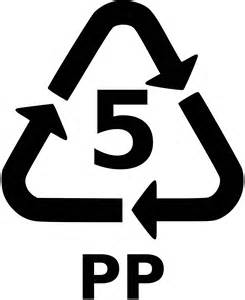
Containers for Mixing Your Soap
Stainless Steel Pots
A stainless steel pot is great to make soap in. Lye does not react to stainless steel. When you get into making bigger batches of soap, a big stainless steel pot is a lifesaver. Make sure your pots are stainless steel and not a blend of stainless steel and aluminum.
Rubbermaid Bowls
These Rubbermaid bowls (6.2 cups) hold two-pound soap recipes perfectly. I use these all of the time and even use them in all of my classes that I teach. Look for the triangle with the #5 in it.
I find these at the dollar store and grab them every chance I get! I also use these bowls for multi-batch prep! Check out my video on YouTube.
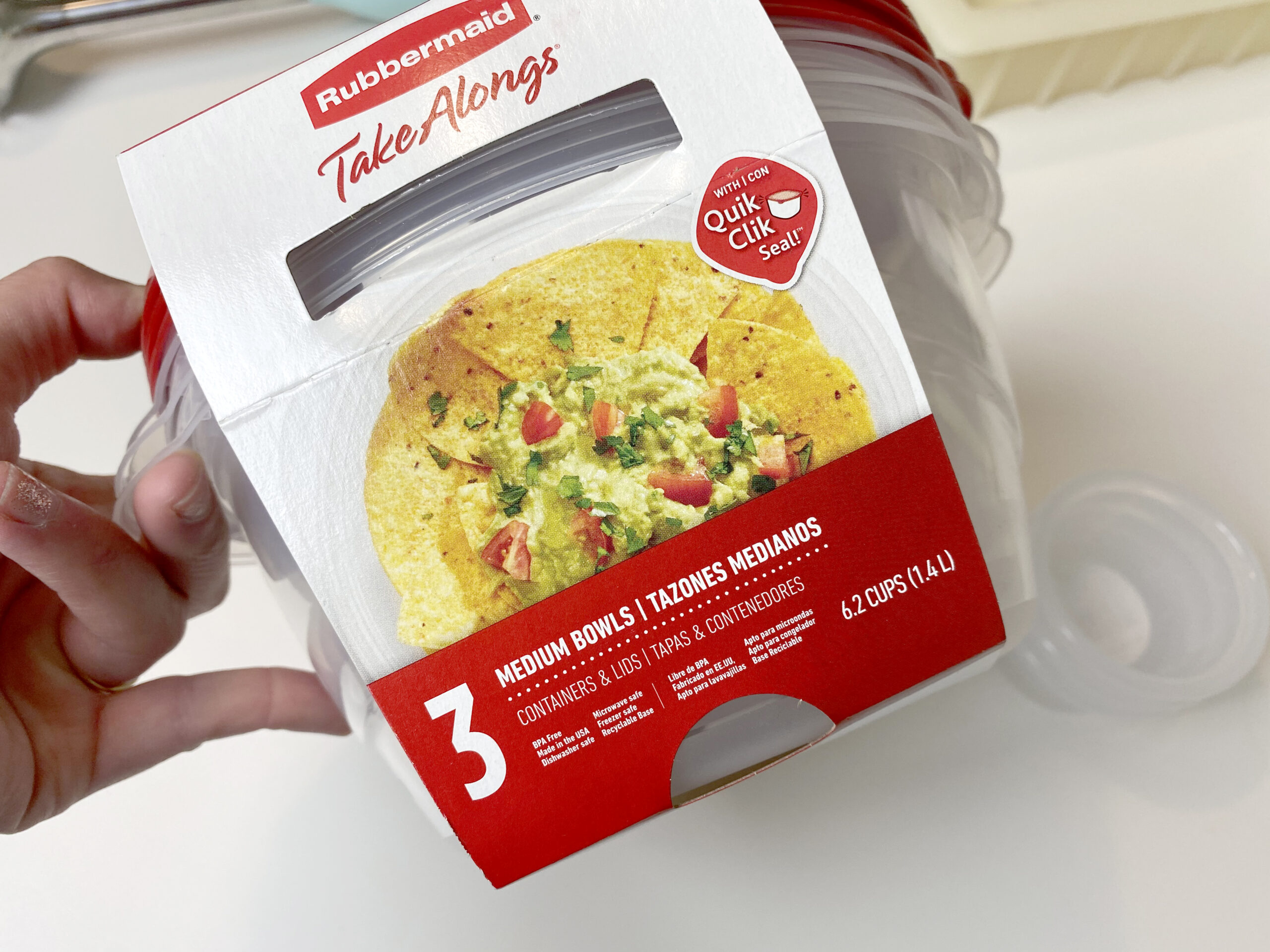
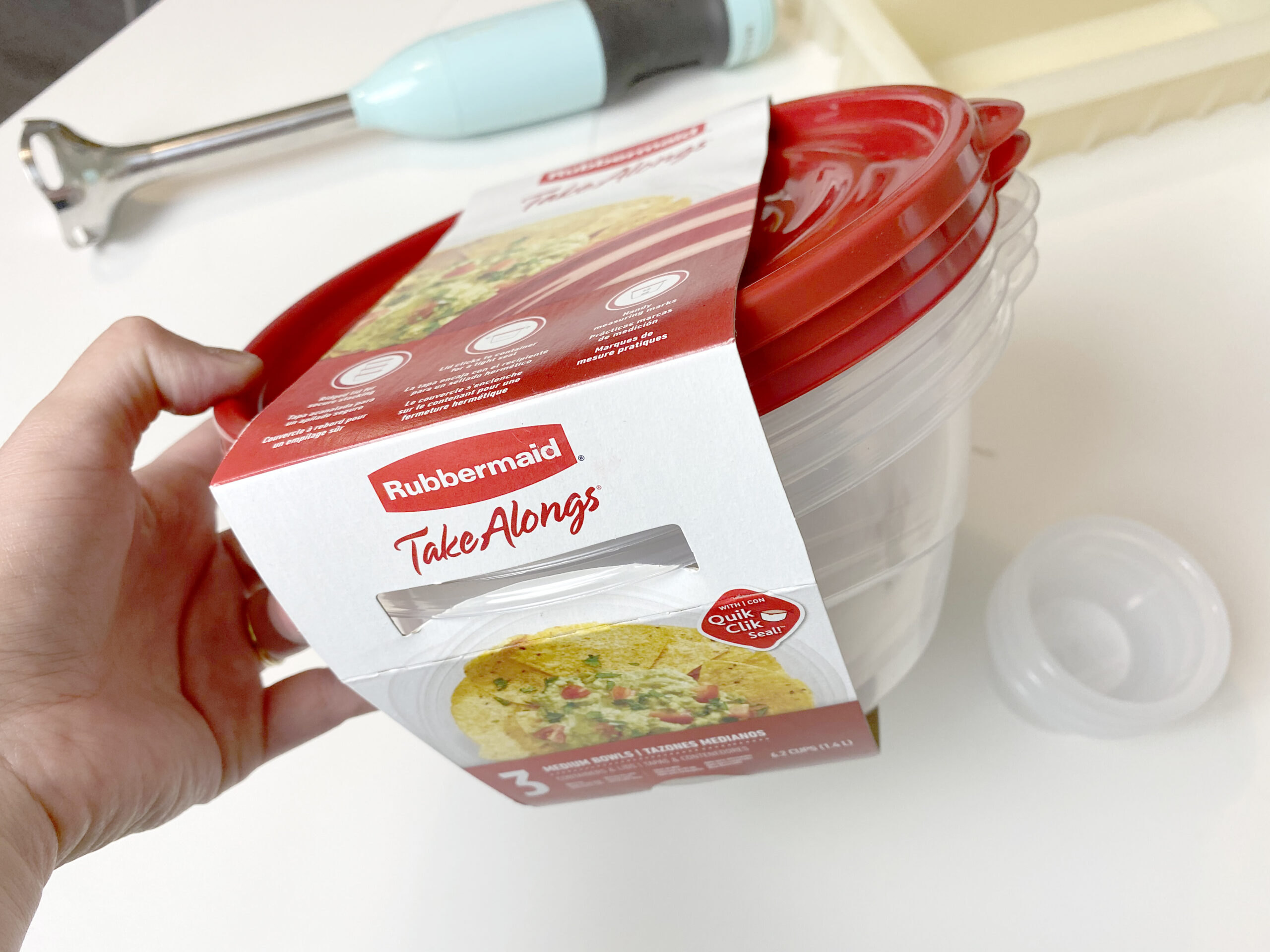
Plastic Pitchers
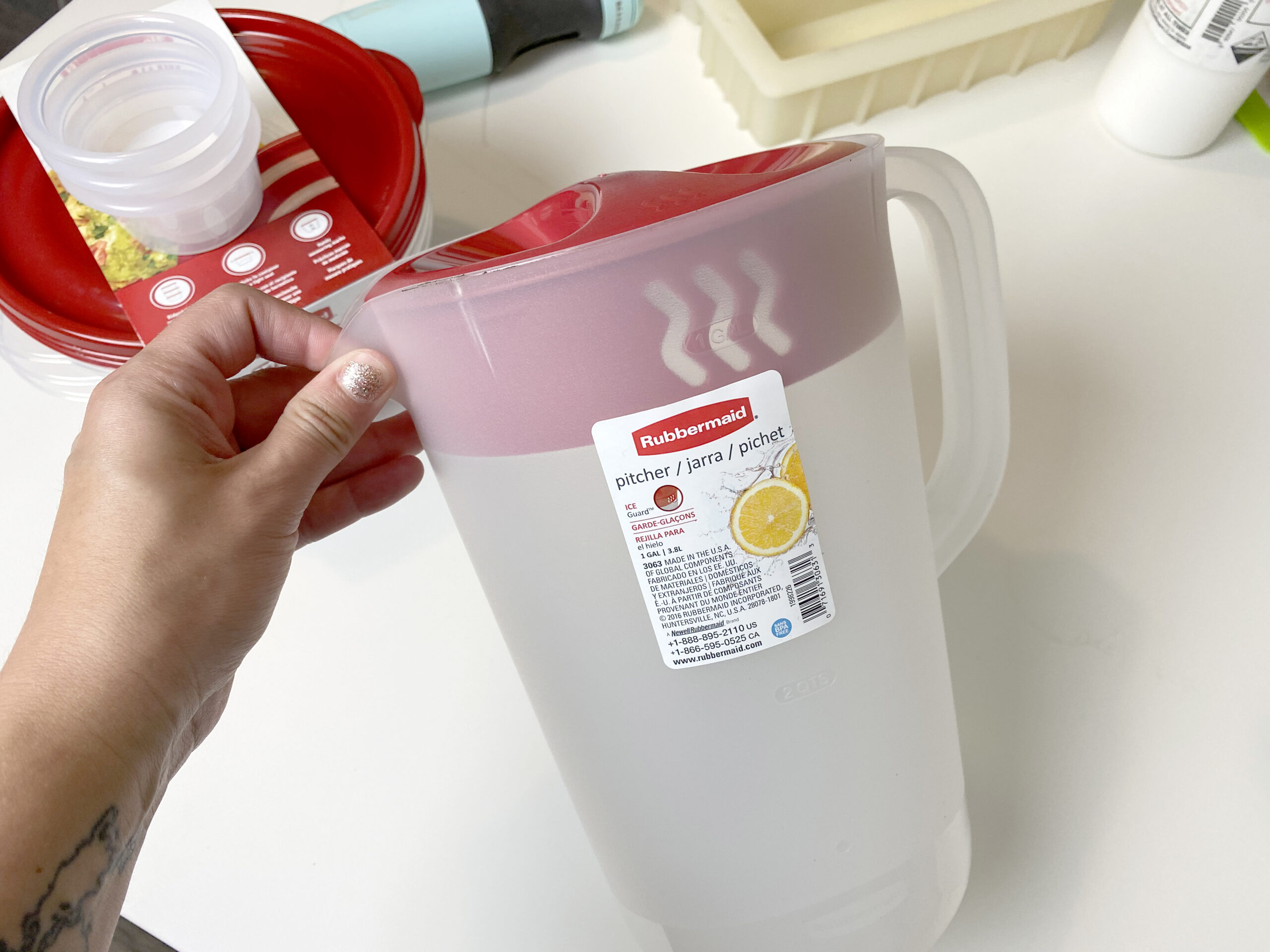
Plastic pitchers are great for mixing soap in. You can find them at dollar stores, Walmart and even thrift shops. Stay away from hard brittle plastic pitchers, such as those used to serve tea and water at restaurants.
Stainless Steel Bowls
You can make soap in a stainless steel bowl. Make sure that it is stainless steel and not a blend of stainless steel and aluminum.
Plastic Buckets
Buckets are great to make soap in. You probably get some of your raw materials in buckets. A gallon bucket will hold up to 6 pounds of soap. Once you up your production (learn about master-batching), you can use five-gallon buckets to make batches of soap up to 40 pounds.
Glass Measuring/Mixing Bowls
Large glass measuring bowls are great for mixing soap in. You can get up to 4 pounds of soap in the larger ones. (Never mix your lye in glass containers, even Pyrex).
Containers for Lye Solution
You can use any of the above containers, EXCEPT for glass containers. Never mix your lye solution in glass. Even Pyrex has been known to etch and shatter when used with sodium hydroxide.
Here are some other options for containers to mix your lye solution in.
Paint Mixing Containers
You can find these paint mixing containers in the paint section of home improvement centers. The small ones are great for mixing up your lye solution. Overtime the plastic seems to get a bit brittle and you should replace them.
Plastic Measuring Cups
These containers are great for mixing lye solution in. You can find them at dollar stores, Walmart and kitchen stores.
Again, I can’t stress enough to not mix your lye solution in glass. The heat of the solution shoots up to 160+ degrees F and this quick fluctuation of temperature can make your glass shatter.
Containers for Fragrance/Essential Oils
Glass Jars and Measuring Cups
You should only measure fragrance oils and essential oils into glass or stainless steel. We love to use mason jars as we always have some on hand. Fragrance oils and essential oils can eat through plastic and Styrofoam, so never measure into plastic drink cups.
For my more experienced soapmaker readers, what are you favorite containers?
Happy Soaping!
-Amanda Gail

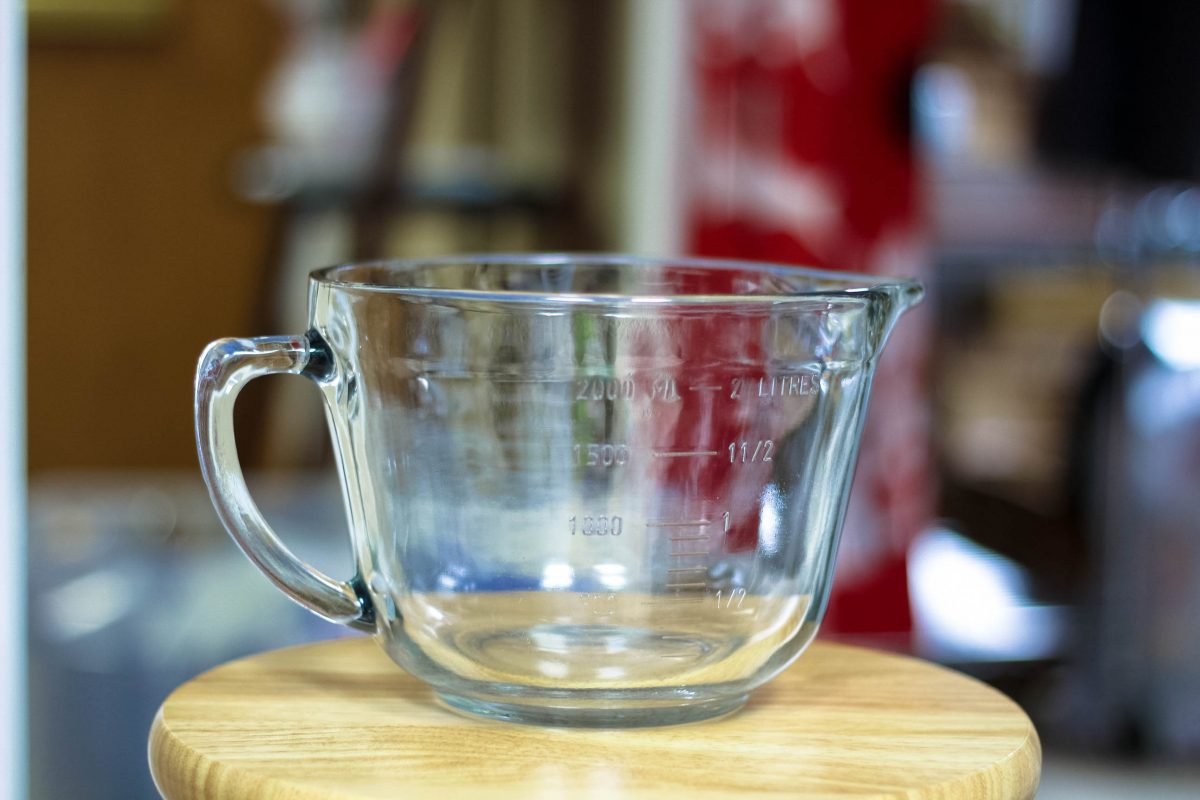
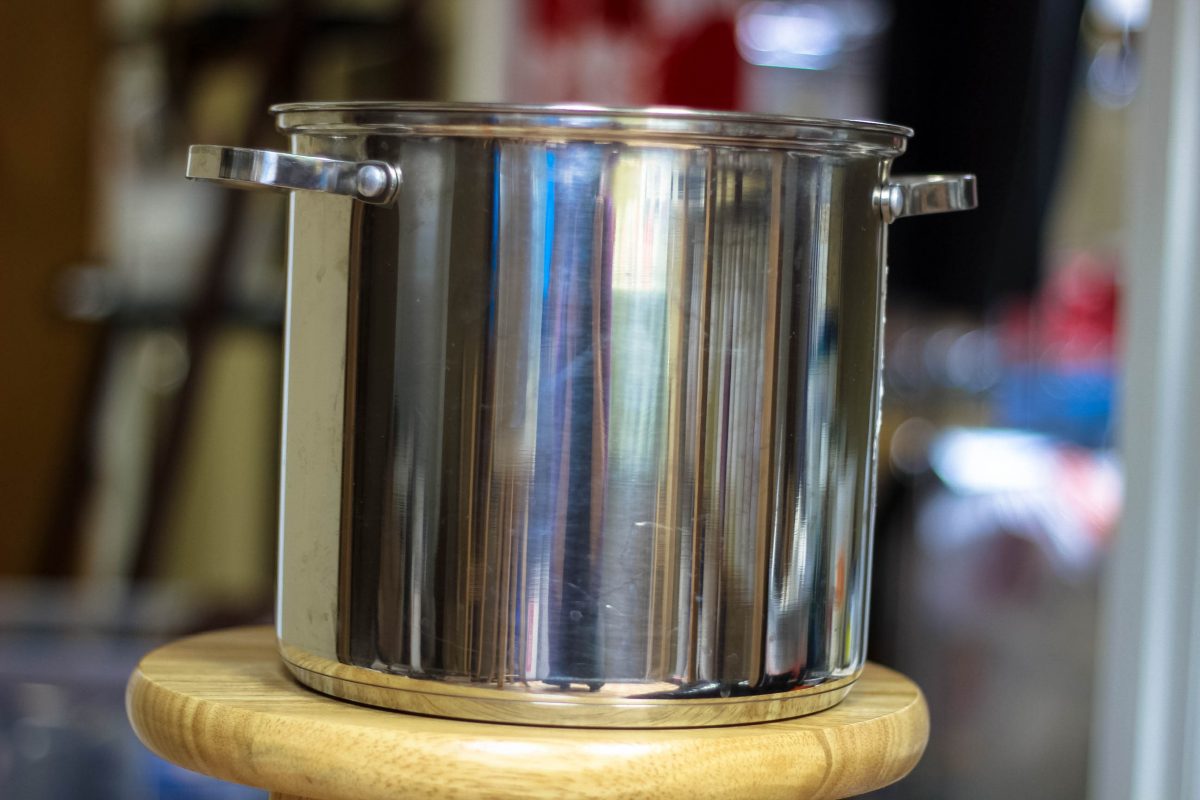
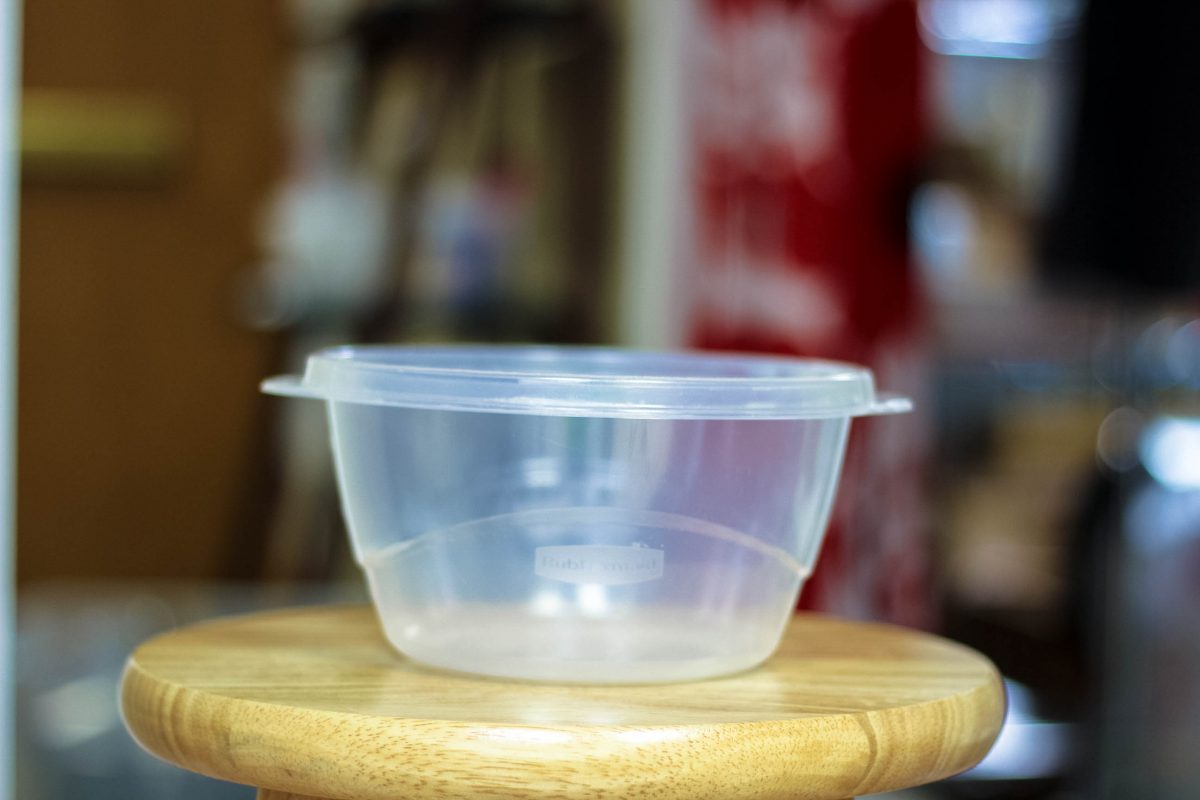
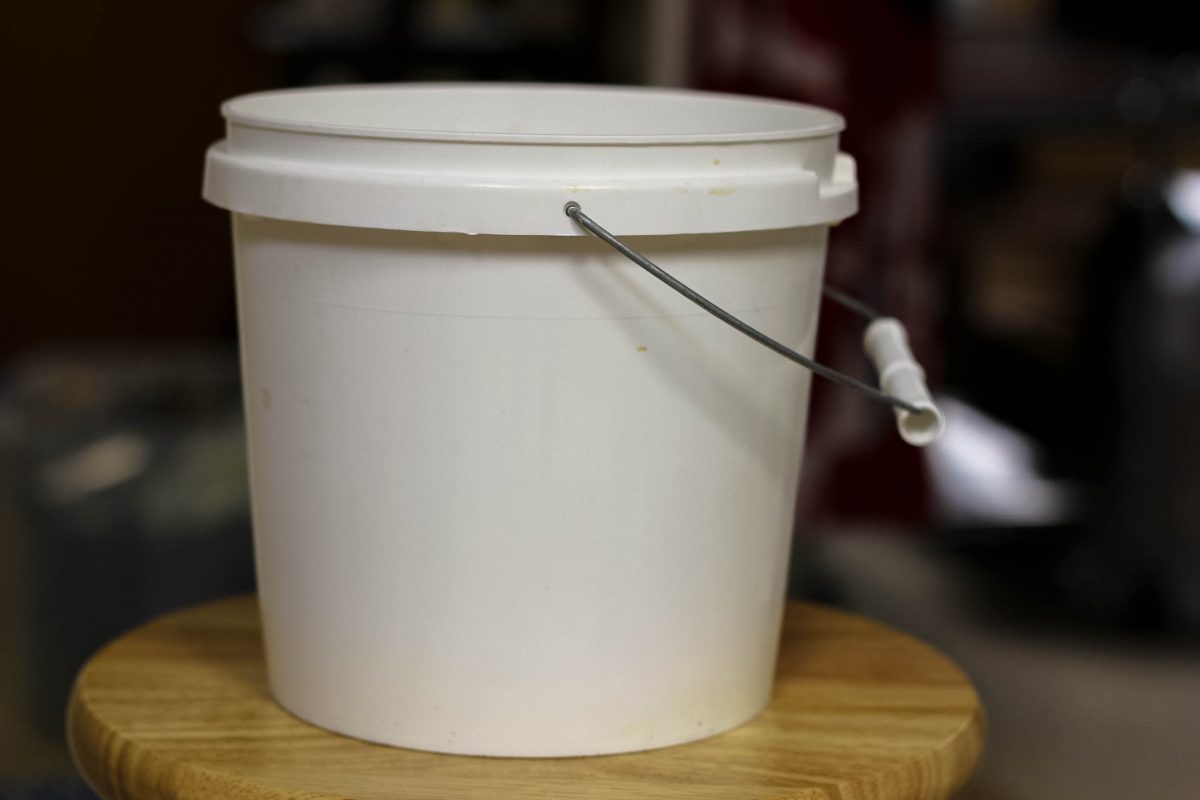
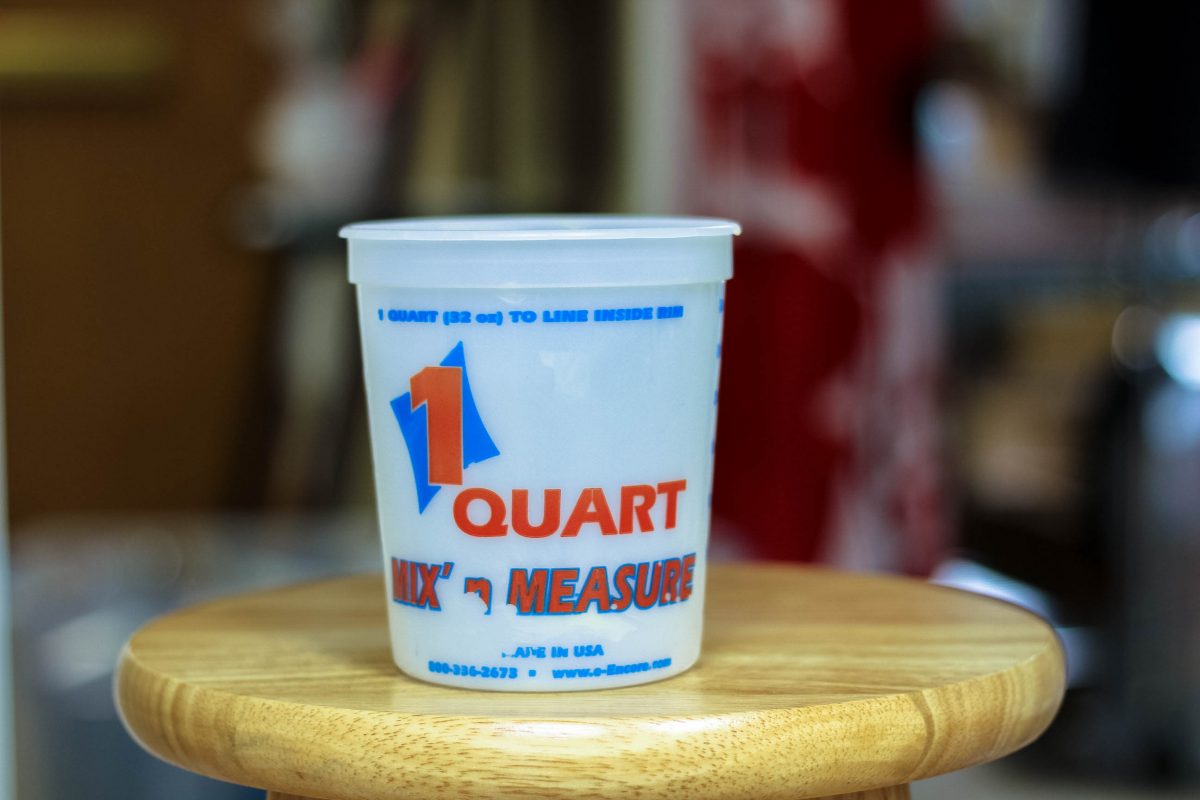
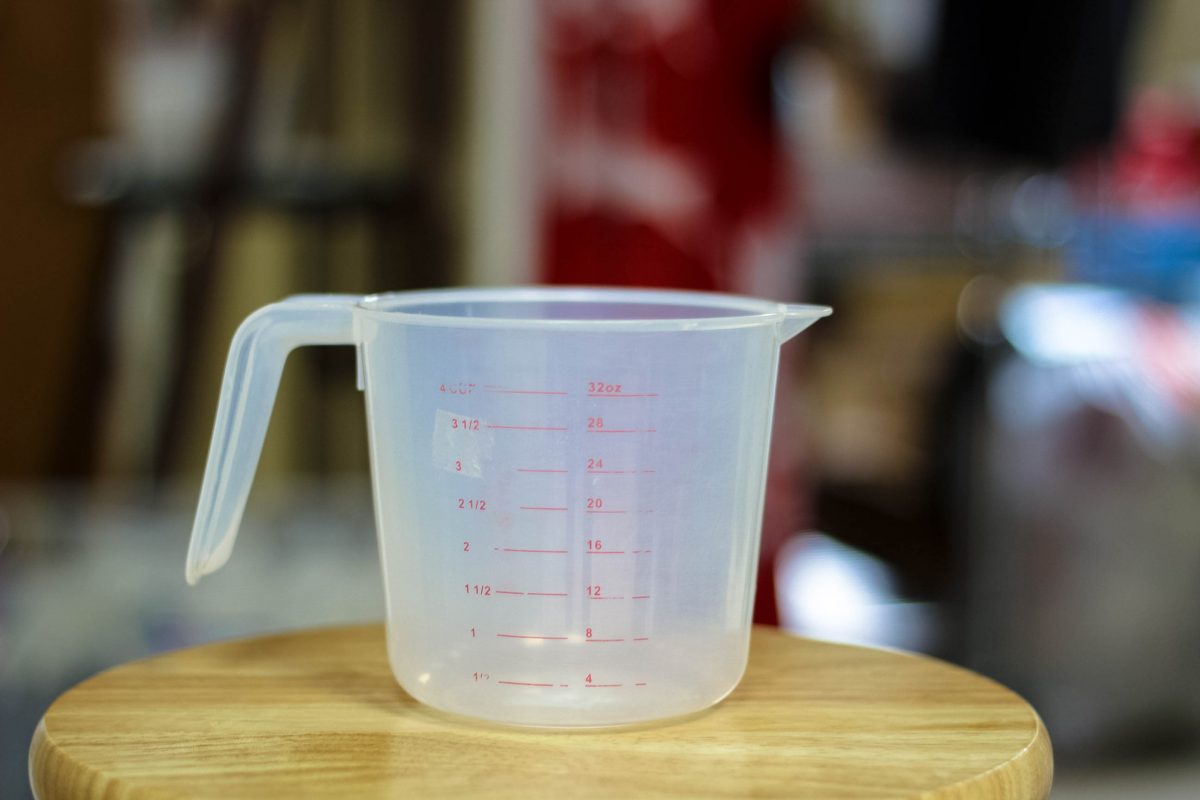
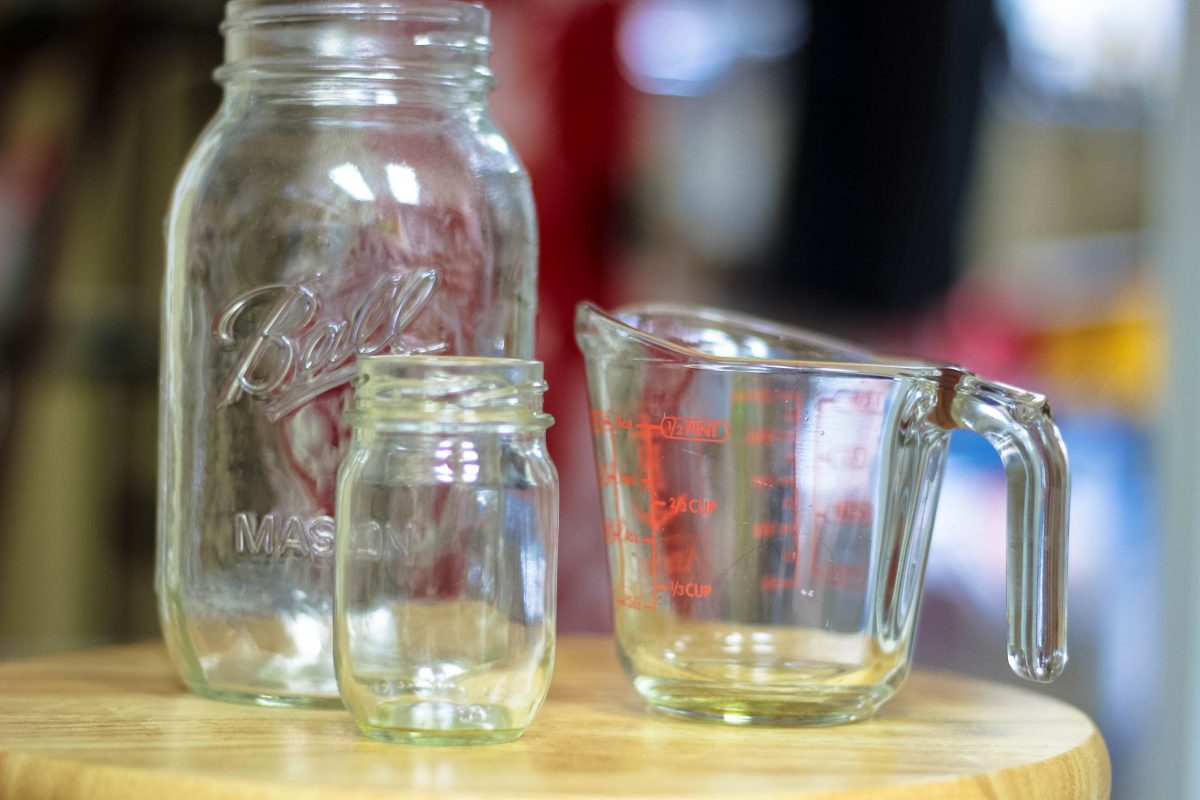
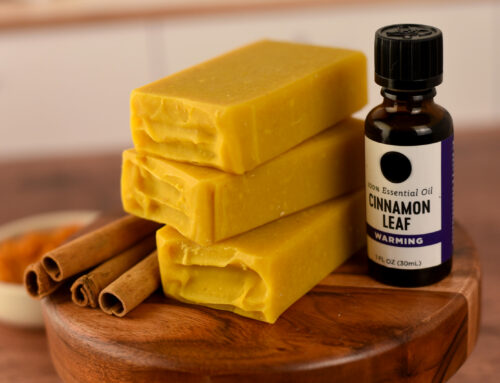
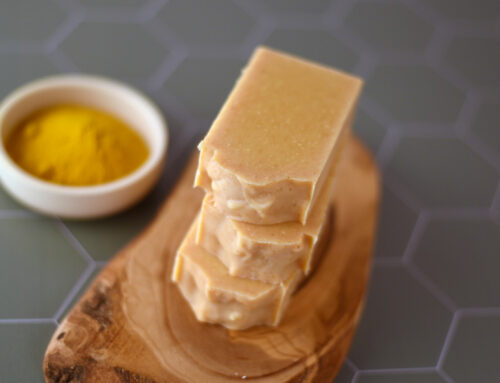
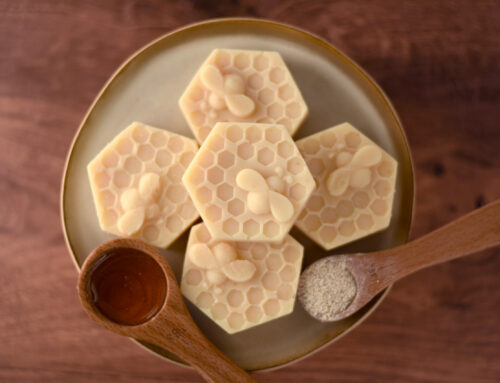
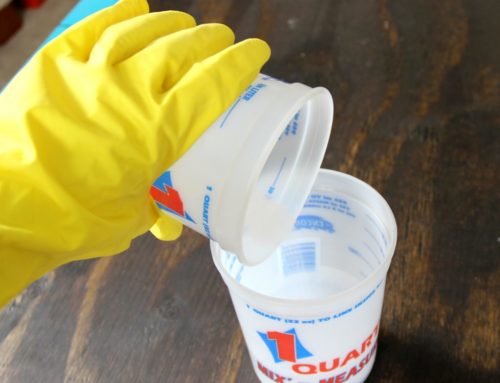

Everything that I have read, you should never store your essential oils in clear glass. The bottles should always be amber in color due to the light will weaken the scent.
The post is talking about containers to measure your oils in or have on the side as part of your ingredient prep not for storing and permanently keeping the oil in.
Really like your website however there is an issue with a piece of the information you put into this post. After extensively and repeatedly calling Walmart to find out about their nesting 3 piece Mainstays measuring cup set sold in the store/website I found out that they are actually made from Polyethylene Terephthalate (PET/PETE) rather than polypropylene. Since I didn’t know anything about this product I went and did a bunch of research and found out that this product reacts very poorly with sodium hydroxide and potassium hydroxide. 👎 Therefore I would not recommend the Walmart Mainstays liquid measuring cups. By the way they do not have any recycle codes on the bottom of them which seems to be astonishingly true with all of their measuring cups in the store. I did however find an almost identical set of nesting measuring cups at the Target store from their Room Essentials product line and those actually have a #5 recycling code on them. 😁👍
Qust 1. Please can 1 person make different type of soap?
Qust 2. Can some choose to make the soap to earn a living?
is it ok to melt my oils and butters in my small crock pot then add the lye water to it? i won’t use the crock pot for food any more
but i don’t hear much about using ceramic crock pots to melt oils. please let me know? I am planning on making my first CP soap soon.
Still researching the differences until my supplies come in. thank you
For people that still really want to use glass, heating a full glass is safer than heating glass that only has a small amount of liquid in it; It doesn’t heat evenly and can cause the glass to break. So try to use the right size for the job.
Can you use the mixing bowl for food prep after making soap? Run it through the dishwasher?
I think it’s best you don’t. But I’m not certain
The way I think of it is: can you use plastic ware for food after washing it in soap? Can you use containers after using it with baking soda(not as strong base as NaOH, but still similar)? Do you use coffee carafe/pots after cleaning it out with CLR(more similar to NAOH)? If your answer is yes to all, then yes will be your answer.
The best argument for not mixing eating and soapmaking happened a few years ago. My husband started to drink out of a glass and his lips started burning. He told me “that still had lye in it, my lips are burning.
I ask what he drank out of because I don’t mix eating and soaping vessels. I had never made soap in what he drank out of so we immediately knew it wasn’t lye and were on to diagnosing what it really was.
Turns out someone had spearmint essential oil on their hand and transferred it to the glass. straight essential oil can burn.
When you don’t have much time to figure out what you are dealing with its worth it to know its not lye.
I would stay clear of it, regardless, just for safety sake and for two very good reasons.
Plastic especially because it does have a tendency to absorb what has been put into it. If you’ve ever put anything with tomato in a plastic tub for any length of time, no matter how little of it is in a recipe, that tomato will stain it. That stain is something not only being left behind from the tomato, but has been absorbed into the plastic. Usually, soaking it in a little bleach water or laying it out in the sun during a bright sunny day will get rid of most of it. But, really. . . I wouldn’t risk it.
Secondly, specifically for those of us who might think about using second hand items for their soap making, there is an even more serious problem to consider –– drug making, especially methamphetamine.
There have been a growing number of cases of people becoming sick from using cooking pots, slow cookers, etc., purchased second hand. Sadly, they were victims of someone having used those pots for making meth in, and then stupidly or more likely intentionally donating those things to thrift stores. How was it found that cooking pots had been used for making meth? In the process of narrowing down the possibilities of what and how it was that people had become so sick, the pots and utensils used for cooking the last meals eaten prior to an incident became suspect. In testing the surfaces of the pots, etc., it was found that all if not many of the chemical residues used for making meth were present within the pot’s interior.
That leaves one other issue regarding using used cooking pots whose origins you cannot be sure of. It may not be a good idea to use them for soap making either. I don’t know if it would affect the chemicals and ingredients used in the process or not, but I would be more concerned about it leaching into the soap as it is made and then transferring to yours or whomever’s skin when using it after. To say the list of ingredients commonly used in this garbage is disturbing is an understatement.
We live in an increasingly sad and degrading society. The kind of drugs used today not only differ in potency and effects from fifty years ago, but attitudes toward their usage are becoming almost blasé and normalized. I learned of all this because my mother was living in a low-income senior independent living building where meth was being made –– yes, in senior living apartments. In the past five to ten years, this has become an increasing problem. People tend to not think of such a place as one where drugs would be made and sold (it can be a complicated yet ingenious way of going about it when you think on it). What complicates the problem is how we generally see seniors today as being like the seniors of our grandparents and great-grandparent’s era. We forget that today’s seniors were in their late teens and early twenties at the height of the social revolution of the sixties and seventies. That era and the times that came after were quite different from the decades prior. Their outlook and attitudes on life can be rather different from those of seniors, whose heyday was during the Great Wars, the Depression, and the growth of the middle class during the fifties. Many in those generations have left us, with those who remain soon to follow.
So, when those poor souls living in these buildings where this is taking place begin to suffer healthwise and die, it conveniently looks like just the expected natural process of old age. This is expected in a senior only apartment building –– they’re old, and they’re expected to pass, but few think to blame it on the fumes and chemical residues of drug manufacturing.
Anyway, enough about this as it is depressing to talk about and worse to share. Little is being done because so much funding has been cut for fire and safety on a federal level. And no, it isn’t Biden who did it, that has been going on quietly for decades by the conservative party in congress with the support of the same in the Oval Office. The money gets diverted to the military for the sake of raising stock values of the corporations who’ve won contracts with the military, thus increasing the wealth of those representatives who own them. There have been attempts to make it illegal to profit from supporting legislation that benefits one’s stock portfolio, but curiously, one Party in particular has been successful in beating it. Again, enough. . . I mention this just to point out how politics really does affect us all. It may not do so in the immediate sense, but give a year or two or three –– a decade even, and it will have in widespread ways. With that, I will make one last recommendation. If in doubt as to who supports what or doesn’t or who even bothers to show up to vote on a bill, just go to the congressional site and look things up. It is all there, in real time, and for almost every serving member as far back as there are records for. Trusting in any other source is just feeding a bias that gets no one anywhere.
Can you these pots and bowls for food preparation after using them to make soap? With a thorough cleaning.
never share soap making stuff with food eating stuff. always keep them seperate. also silicone is a safe substitute for all of this. i used a popcorn making silicone bowl to make soap with, emitting plastic all together and its reusable.
do you prefer a certain brand of stainless and how many gallons do you recommend?
/.comdo you prefer a certain brand of stainless and how many gallons do you recommend?
Hi Amanda, I saw your book on Amazon. Before buying it though I wanted to ask you if you have all the measures in grams or ounces? I live in Germany and if it were in grams it would be very helpful
To covert: Ounces multiplied by 28 gives you the gram weight.
Thank you so much for this information…I’ve been trying to find a visual of what containers I could use to mix up soaps and lye…this was so helpful!
Hi
Thanks for your information.
You are so experienced?
Thanks for the information. I wished to avoid using plastic altogether to be ecofriendly. Until I read this article I was planning to purchase glass. I will get stainless steel now! Thanks so much
Hello can I used any fragrance oils for soap making. And how exactly do I measure them as in how much do I know I need for each batter. Thank k you for your time God bless you.
i always used glass for lye ! omg, good job it never broke ! will use plastic from now on 🙂
With the Pyrex, you say they are great for mixing soap but not lye – I assume this means mixing all the ingredients (including hydrated lye and oils) but not for just mixing the lye and water, correct?
You are correct! 🙂
You cannot safely use just any plastic container for mixing lye. Please check the bottom of the container for the recycle triangle. If it has “PP #5” it is safe for mixing lye. HDPE #2 is also safe as long as your lye solution does not excede 190°F. However, the other ones are NOT lye solution safe! I have had one crack and leak lye when it was of lesser quality.
Also good for mixing lye:
Stainless Steel is safe for mixing lye solutions as long as it has no other metal mixed in (although ‘aluminum core’ is okay because it is sandwiched between two layers of stainless steel.
PFTE (polytetrafluoroethylene)- used in labs to store highly corrosive materials. May be cost prohibitive and hard to find.
PP #5 (resistant to alkali and can withstand boiling water) (PP = Polypropylene)
HDPE #2 (safe up to 190°F) – so mixing lye solution might be iffy if you generally go over 190°F (HDPE = High Density Polyethylene)
The above section of this website should really be revised to warn against the wrong kind of plastic containers.
Thanks so much for the information! Do you know if it is ok to store finished soap in an aluminum bottles or are there restrictions to what packaging you should use? Many thanks for any advice!
Hi,
I put Marseille soap in an antique perfume dispenser and it turned green in less than a day. Does anyone know why? Could it be because the pump is metal (probably brass). Does it affect the soap properties? Thank you for your input.
If you live near a store called Ollie’s (good stuff cheap, is their motto) I’ve purchased 80% of the equipment I use to make soap from there. From large stainless steel pots to silicone bread molds, you can get everything you need. I’d be happy to make anyone a shopping list.
Does this offer still stand? If so I’d like a list. Ollie’s just opened in a nearby area.
Good to know!
I no longer use Pyrex in the microwave. It is no longer made from borosilicate glass. I was melting oils in mine in the microwave (which I had done many times before) but this time about a minute and a half into it I looked in and the handle was melting with glass strings going all over my microwave. So I use plastic now without any issue. I was glad it didn’t explode but it was still dangerous and bad to clean up.
Thank you for this great information. Picking soaping containers can be difficult; especially when you aren’t soaping regularly! Thanks for sharing. =)
I love love love the .99 stores! They have mixing/pouring bowls that work great and when they get to messy some times i just toss them lol. Also the paint mixing buckets is such a great idea!
It’s a bad idea, especially if you plan on selling the soap (cross-contamination and food allergies are no joke). Lye will etch and weaken or have a reaction with anything not made of 100% stainless steel or 100% stainless steel plated. And soap making lye IS NOT food grade. The risk of an accidental poisoning or chemicaly burning your mouth, throat and/or stomach increases if you reuse your soap making tools for food prep.
I use Pyrex beakers to measure EO/FO into. They’re relatively inexpensive to purchase from a laboratory supply store. I also have lots of stainless steel condiment cups for measuring fragrances for small batches.
I’m so glad you warned against using glass & Pyrex for mixing lye – when I saw the photo for this article, I cringed a bit! I used Pyrex for a while when I first started soaping, but I heard too many stories about lye/glass explosions, so I use either stainless steel pots or HDPE containers.
I had been using a 2 gallon bucket that some oils came in, but I found a clear plastic container at a restaurant supply store that I love to use now. It has measurement marks on one side which is very helpful when splitting batches. Since it’s clear, I can see on the bottom and sides if I’ve blended the colorant completely. It has a pour spout, too.
One of my favorite containers to use are disposable party cups! I don’t mix my soap directly in them, but use them for ease of coloring smaller portions of the soap batter, once it has come to trace. They are usually just the size I need and biggest bonus of all is that I can throw them away when finished. Less clean-up = WIN!